
Audiobookshelf is a self-hosted audiobook server for managing and playing your audiobooks. It’s fully open-source, including the android & iOS app, currently in beta. You can stream all audiobook formats on the fly. Audiobookshelf has multi-user support and custom permissions. You can easily upload all the audiobooks from your computer to your Synology NAS. In this step by step guide I will show you how to install Audiobookshelf on your Synology NAS using Docker.
STEP 1
Please Support My work by Making a Donation.
STEP 2
Install Container Manager via Synology “Package Center”. If you run an older DSM version (under 7.2), search for Docker instead of Container Manager.
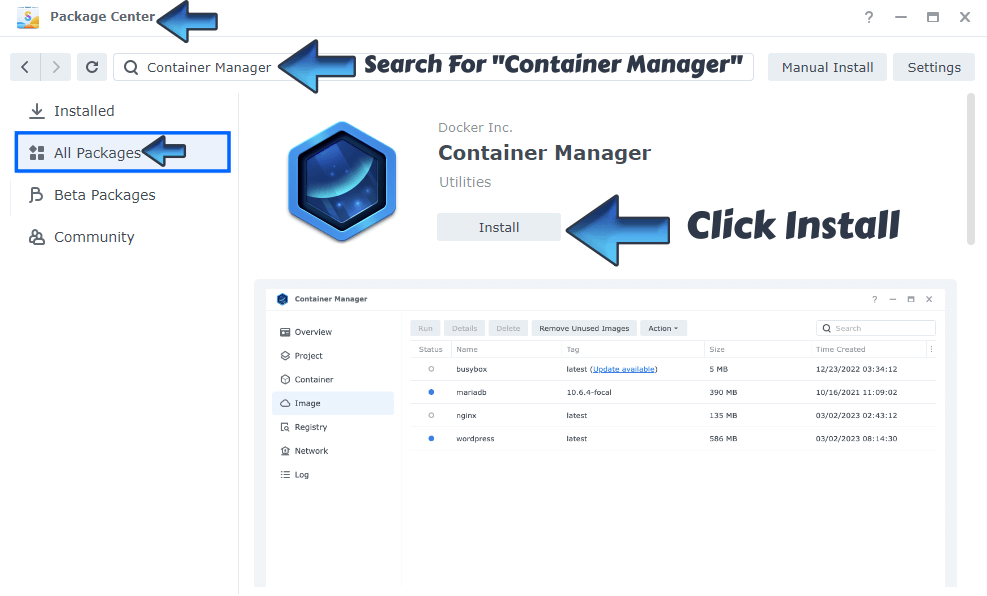
STEP 3
Go to File Station and open the docker folder. Inside the docker folder, create one new folder and name it audiobookshelf. Follow the instructions in the image below.
Note: Be careful to enter only lowercase, not uppercase letters.
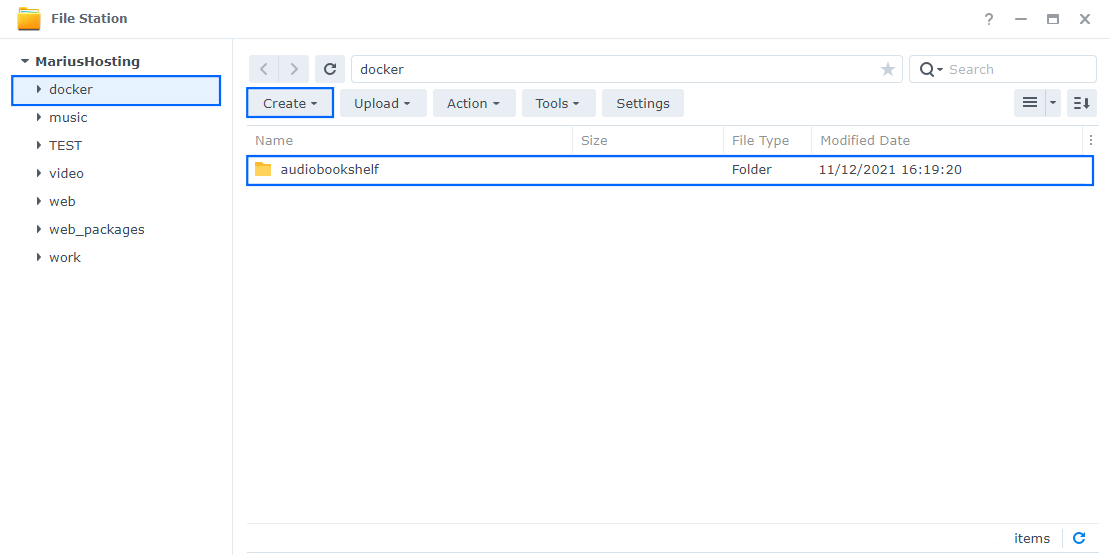
STEP 4
Go to Control Panel / Task Scheduler / Create / Scheduled Task / User-defined script. Follow the instructions in the image below.
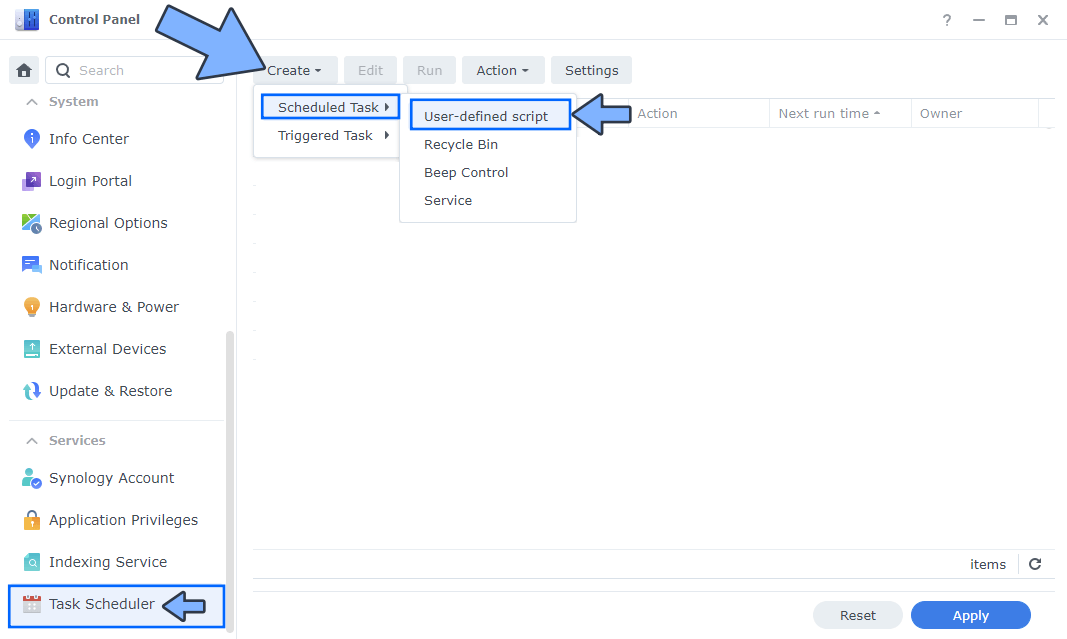
STEP 5
Once you click on User-defined script, a new window will open. Follow the instructions below:
- General: In the Task field type in Install Audiobookshelf. Uncheck the “Enabled” option. Select root User.
- Schedule: Select Run on the following date then select “Do not repeat“.
- Task Settings: Check “Send run details by email“, add your email then copy paste the code below in the Run command area. After that, click OK.
docker run -d --name=audiobookshelf \ -p 13378:80 \ -e JWT_SECRET_KEY=dOxZYTTZgXKMHkqLBIQVImayQXAVWdzGBPuFJKggzcgvgPJPXpWzqzKaUOIOGGIr \ -v /volume1/docker/audiobookshelf:/config \ -v /volume1/web/audiobooks:/audiobooks \ -v /volume1/web/metadata:/metadata \ --restart always \ advplyr/audiobookshelf
Note: Before you paste the code above in the Run command area below, change the value for JWT_SECRET_KEY. (Generate your own Random 64 length JWT_SECRET_KEY.)
Note: in the code above after -v /volume1/docker/audiobookshelf:/config \ you have to add your personal path to audiobooks. For example I have used my personal audiobooks path folder -v /volume1/web/audiobooks:/audiobooks \ Change it according to your preferences. -v /path/toyour/audiobooks:/audiobooks \
Note: in the code above after -v /volume1/docker/audiobookshelf:/config \ you have to add your personal path to metadata. For example I have used my personal metadata path folder -v /volume1/web/metadata:/metadata \ Change it according to your preferences. -v /path/toyour/metadata:/metadata \
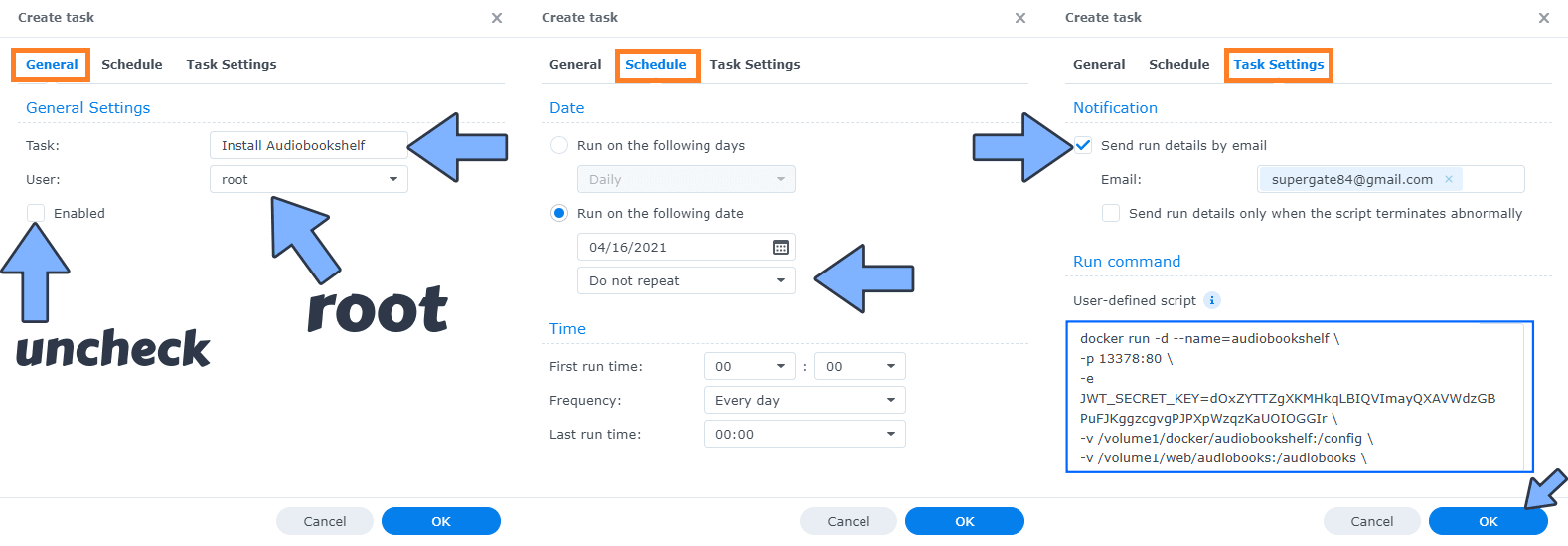
⚠️Warning: Your directory name can’t contain spaces or you will not be able to install it. Example: -v /volume1/web/audiobooks:/audiobooks is correct and \ -v /volume1/web/audio and books:/audiobooks \ with spaces in the folder name is not correct.
If you want to make the folder work with spaces, you need to add the “” as per the following example:
-v “/volume1/web/audio and books“:/audiobooks \
STEP 6
After you click OK on STEP 5 a new warning pop up window will open. Click OK.
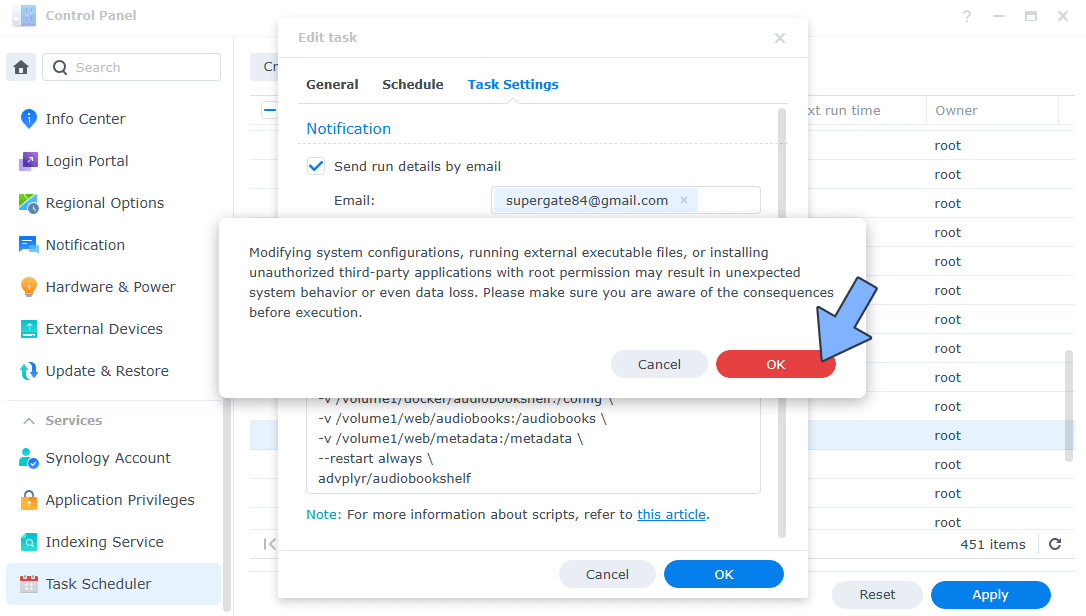
After you click OK, type in your DSM Password then click Submit. Follow the instructions in the image below.

STEP 7
After you click Submit on STEP 6, select your “Install Audiobookshelf” Task then click the “Run” tab. You will be asked to run Install Audiobookshelf – click OK. Follow the instructions in the image below.
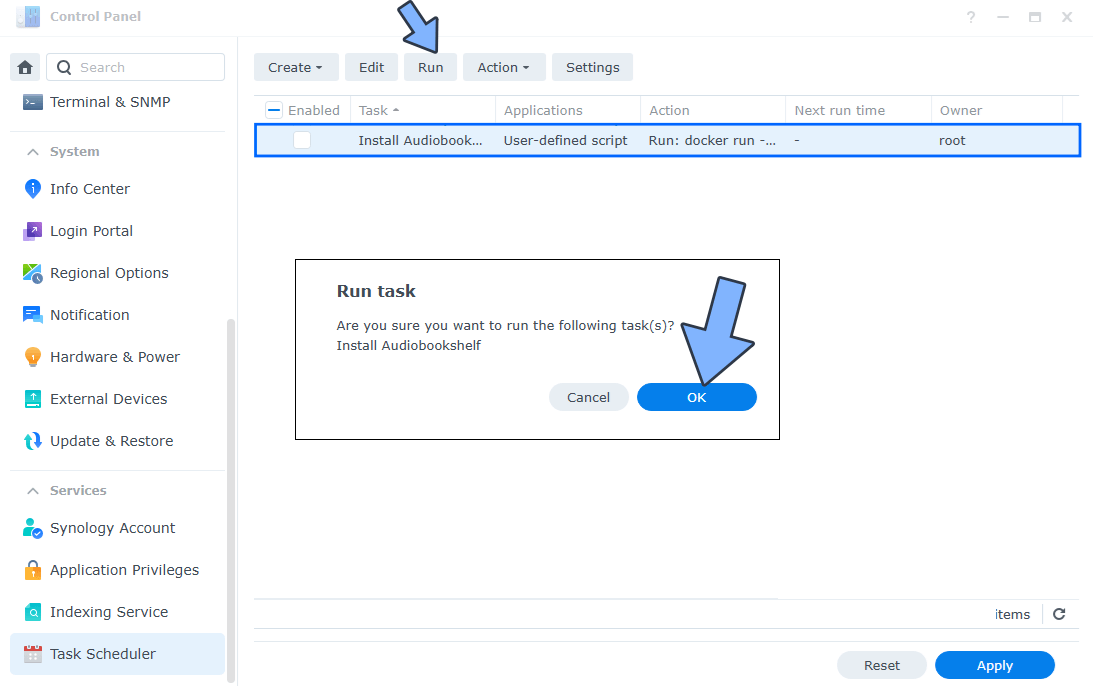
STEP 8
🟢Please Support My work by Making a Donation. Almost 99,9% of the people that install something using my guides forget to support my work, or just ignore STEP 1. I’ve been very honest about this aspect of my work since the beginning: I don’t run any ADS, I don’t require subscriptions, paid or otherwise, I don’t collect IPs, emails, and I don’t have any referral links from Amazon or other merchants. I also don’t have any POP-UPs or COOKIES. I have repeatedly been told over the years how much I have contributed to the community. It’s something I love doing and have been honest about my passion since the beginning. But I also Need The Community to Support me Back to be able to continue doing this work.
STEP 9
The installation process can take up to a few seconds/minutes. It will depend on your Internet speed connection. Now open your browser and type in http://Synology-ip-address:13378 You will be prompted to create the Administrator user. Type in your own Username and Password, then click Submit. Follow the instructions in the image below.
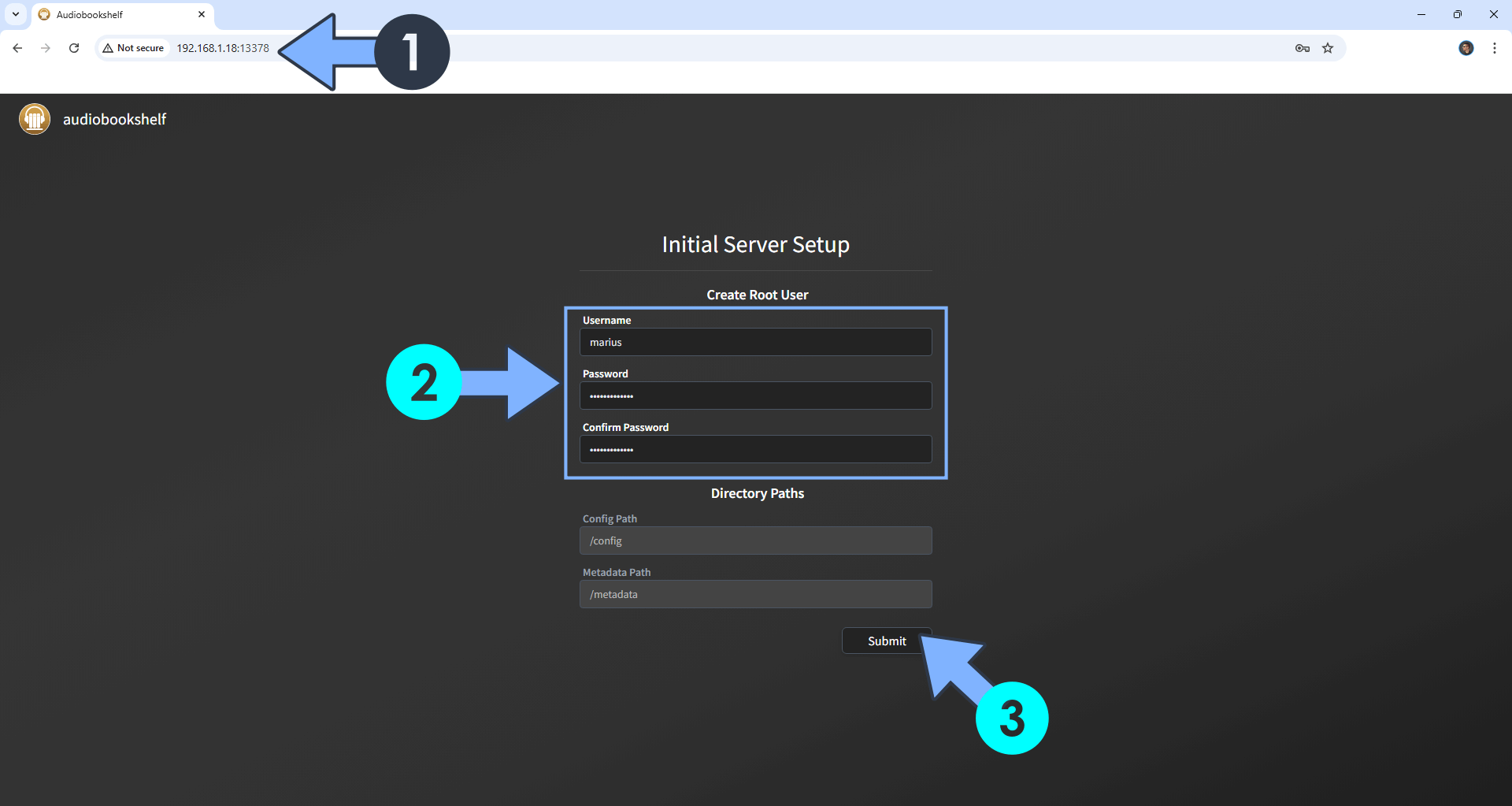
STEP 10
Type in your own Username and Password that you have previously created at STEP 9, then click Submit. Follow the instructions in the image below.
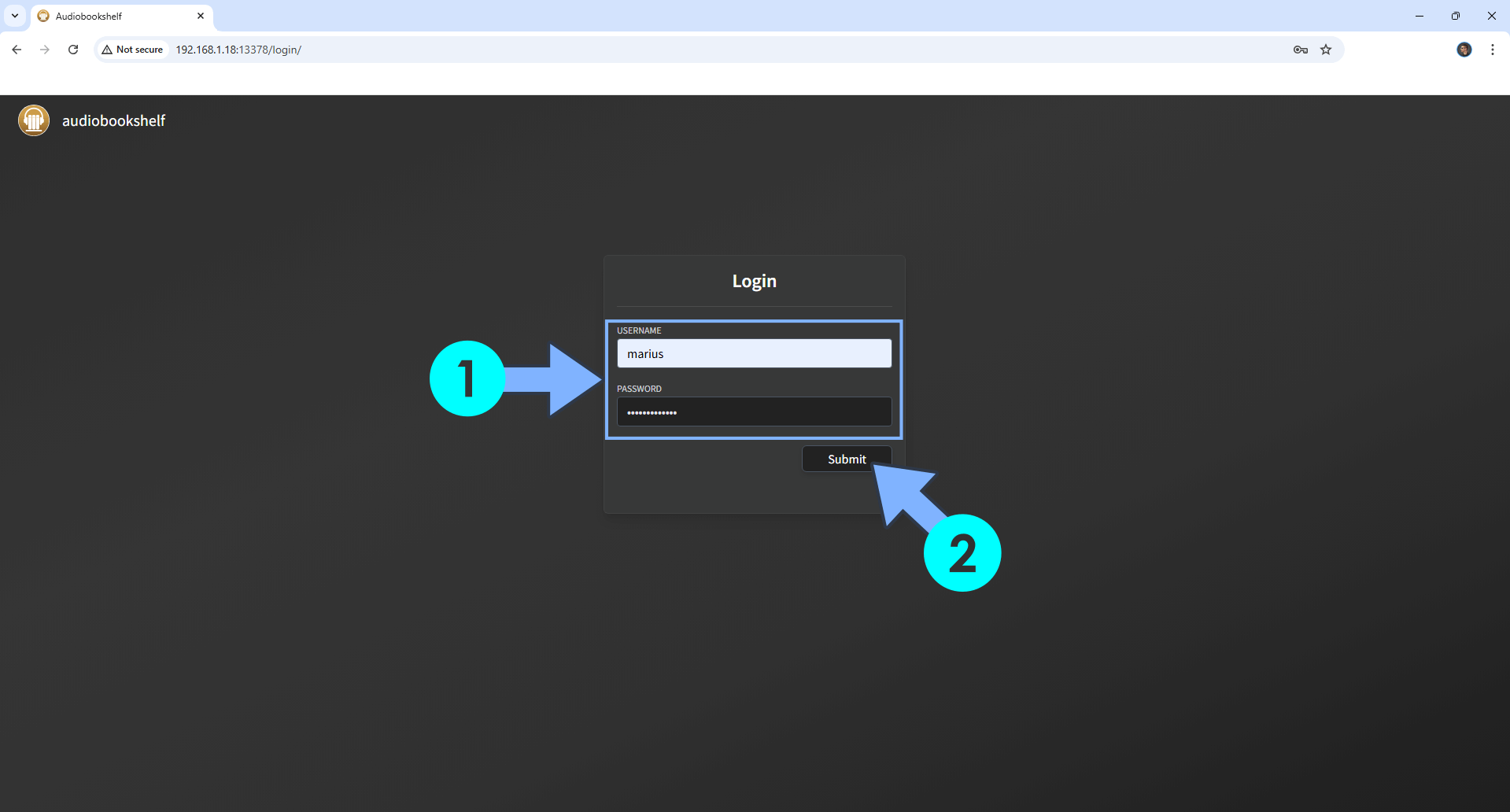
STEP 11
On the left sidebar, click Libraries, then Add your first library. Select the Media Type “Books”. Give a name to the library, then click Browse for Folder. Follow the instructions in the image below.
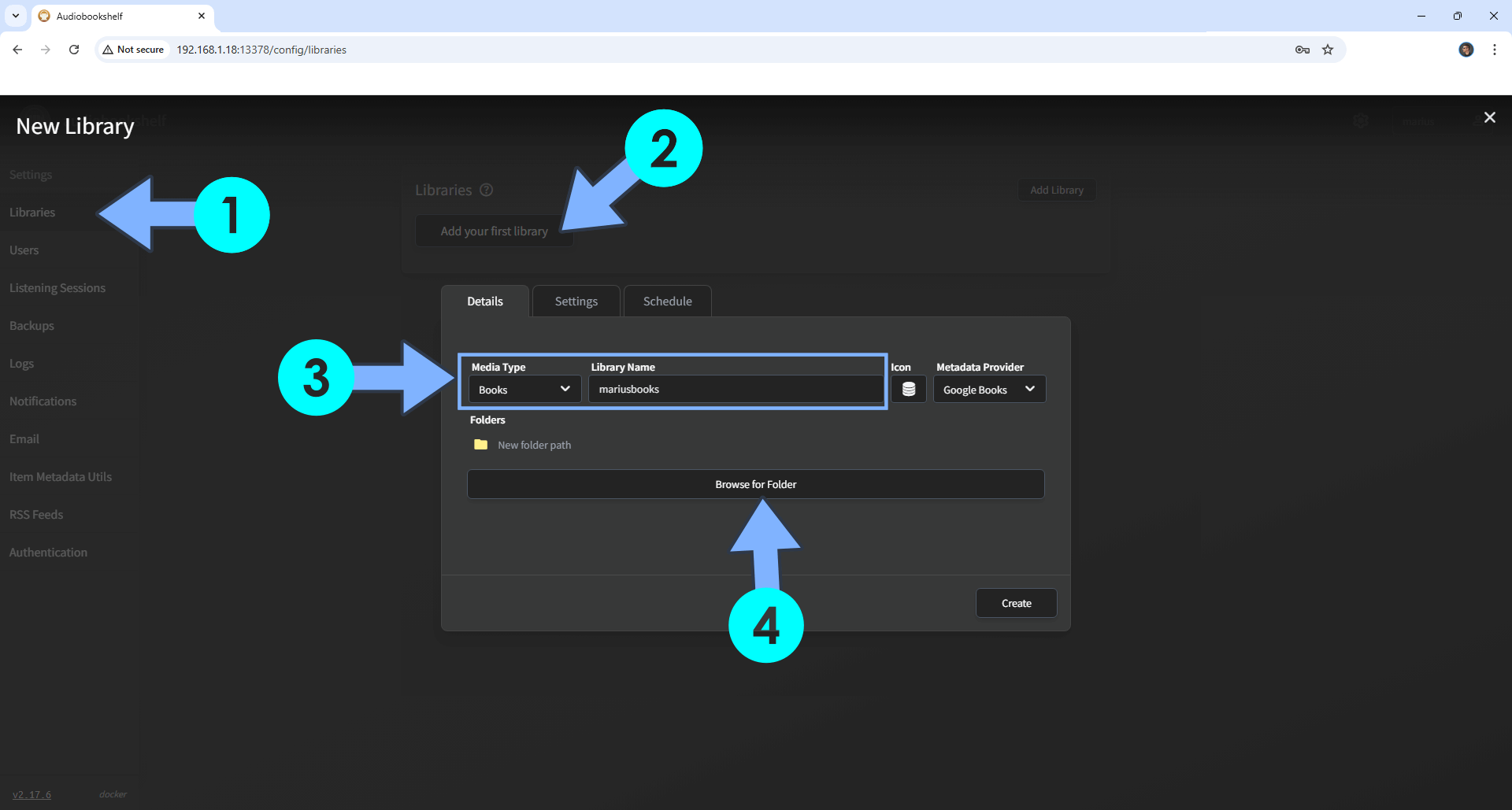
STEP 12
Select the audiobooks folder, then click Select Folder Path. Follow the instructions in the image below.
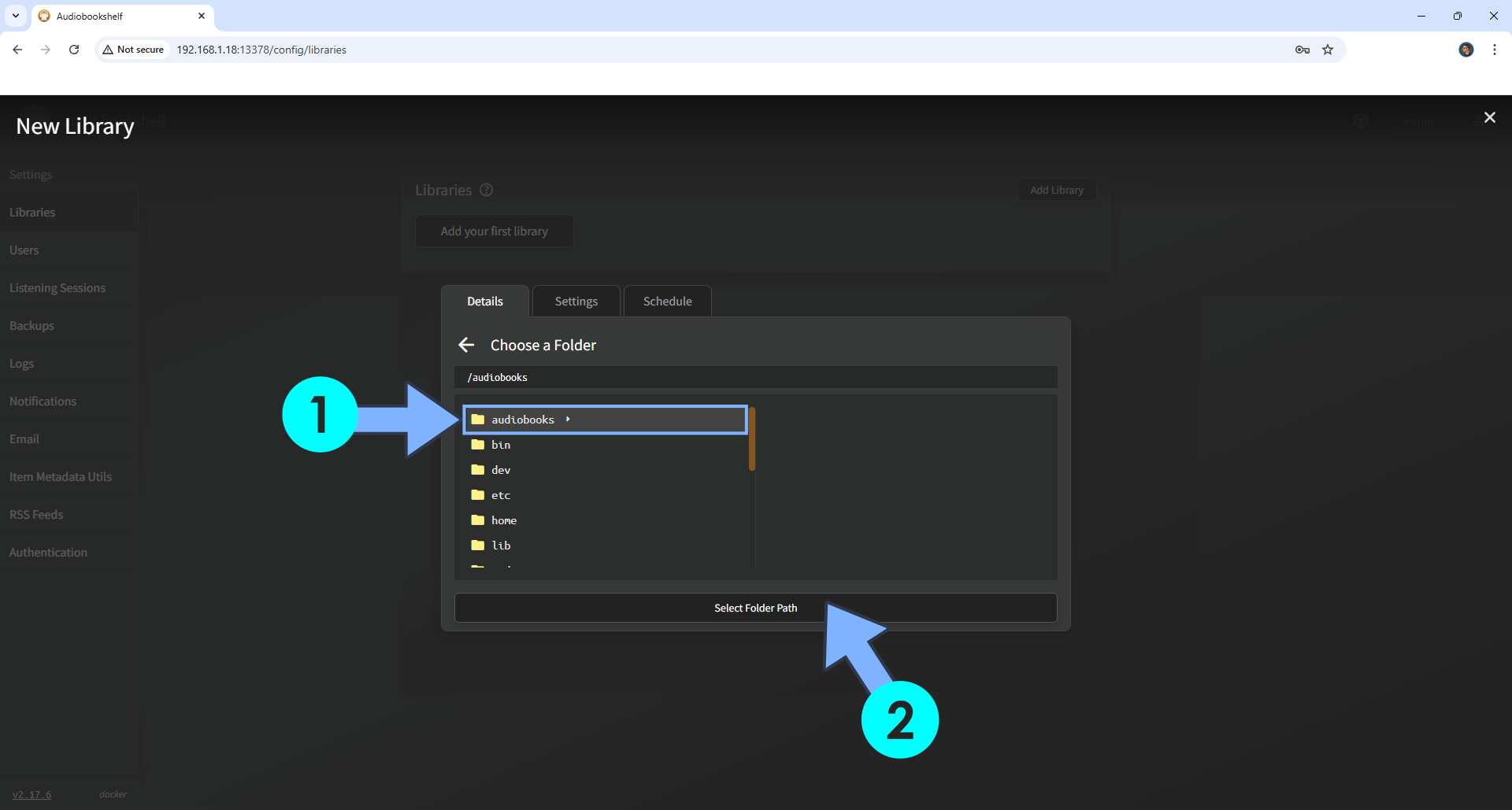
STEP 13
Click Create. Follow the instructions in the image below.
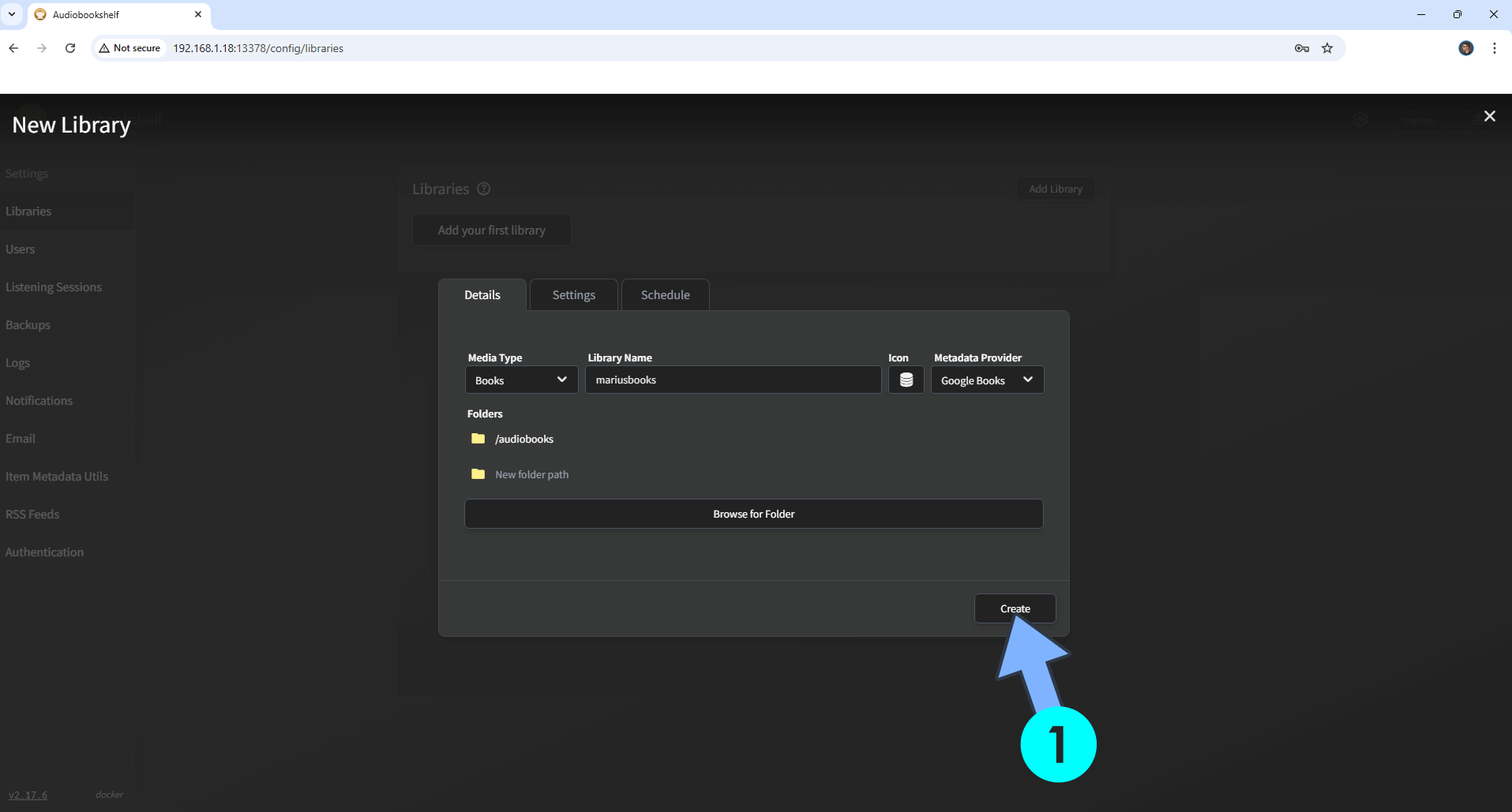
STEP 15
⚠️Warning: Before Scanning your new library that you have created, make sure you have added/uploaded your audio files inside your personal path to audiobooks. Click Scan. Follow the instructions in the image below.
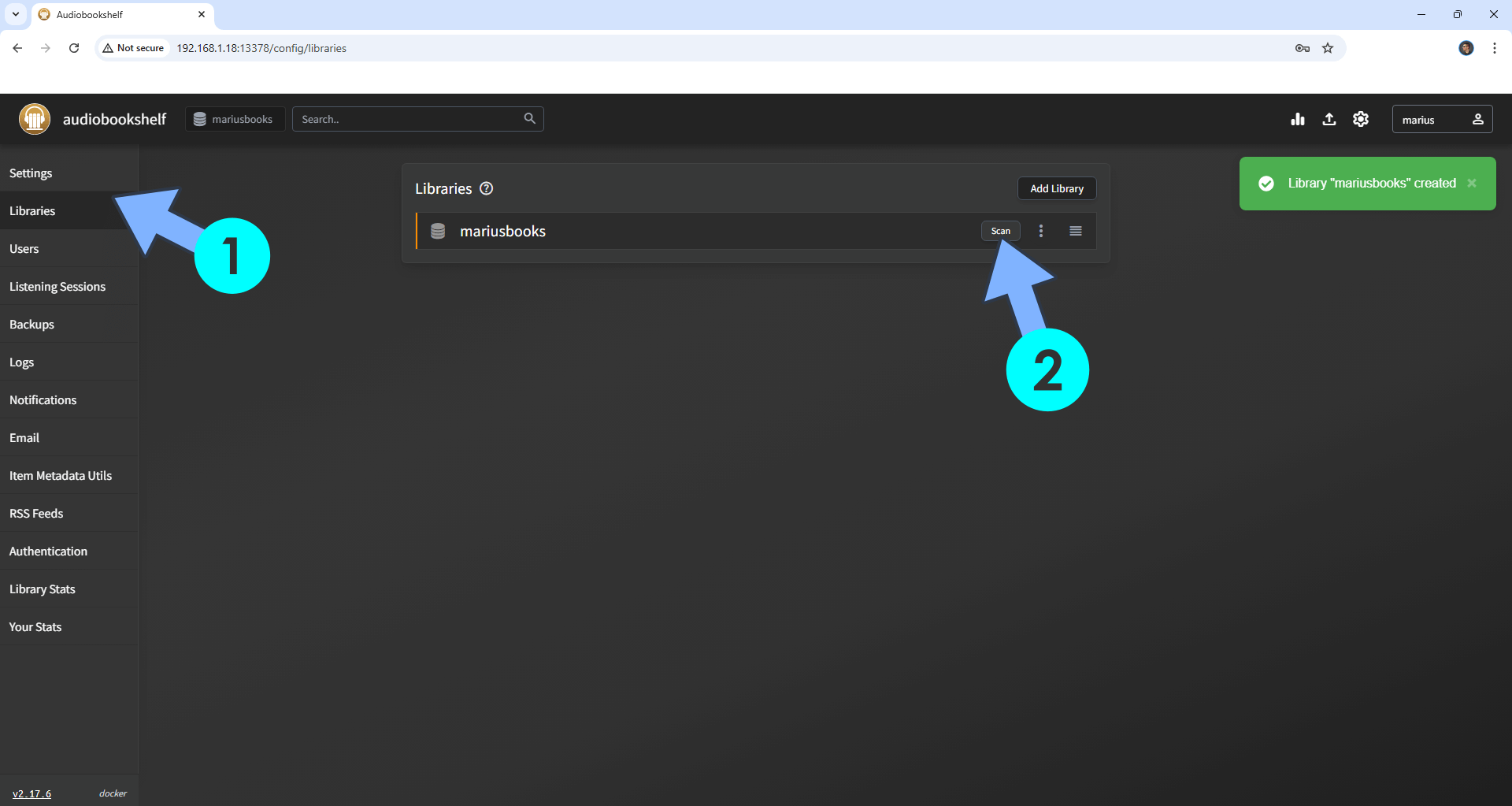
STEP 16
Your Audiobookshelf at a glance!

Note: If you want to run the Audiobookshelf container over HTTPS, check out my guide on How to Run Docker Containers Over HTTPS. If you add Reverse Proxy to Audiobookshelf, you will need WebSocket Activation to make the container available via HTTPS.

Enjoy Audiobookshelf!
If you encounter issues by using this container, make sure to check out the Common Docker issues article.
Note: Can I run Docker on my Synology NAS? See the supported models.
Note: How to Back Up Docker Containers on your Synology NAS.
Note: Find out how to update the Audiobookshelf container with the latest image.
Note: How to Free Disk Space on Your NAS if You Run Docker.
Note: How to Schedule Start & Stop For Docker Containers.
Note: How to Activate Email Notifications.
Note: How to Add Access Control Profile on Your NAS.
Note: How to Change Docker Containers Restart Policy.
Note: How to Use Docker Containers With VPN.
Note: Convert Docker Run Into Docker Compose.
Note: How to Clean Docker.
Note: How to Clean Docker Automatically.
Note: Best Practices When Using Docker and DDNS.
Note: Some Docker Containers Need WebSocket.
Note: Find out the Best NAS Models For Docker.
Note: Activate Gmail SMTP For Docker Containers.
This post was updated on Saturday / December 6th, 2025 at 4:21 AM
